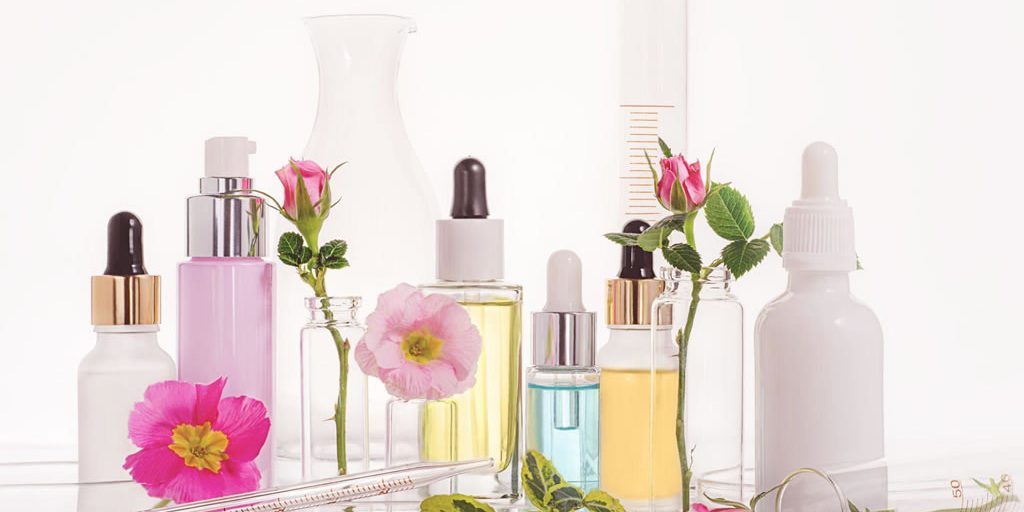Do you check the ingredients on your cosmetics for allergens

In 2019 a 19 year old student received a Nivea luscious lips gift tin for Christmas! This comprised of 2 lip butters and 2 lip balms.
Amy carefully checked the ingredients of these products before applying as she suffered with a severe nut allergy since she was 4 years old!
Within a very short period Amy’s lips began to tingle and her throat became scratchy, she realised this was anaphylactic shock and quick removed the balm, took anti-histamines and throat sweets. Luckily Amy caught this reaction early and only suffered a sore throat for the rest of the day!
It was only later when they reinspected the tin they discovered it contained Prunus Amygdalus Dulcis (Sweet Almond Oil).
So if you suffer with allergies it is worth checking your skincare products aswell. Cosmetic labelling regulations are not similar to food labelling regulations. Allergens in skincare products are not highlighted and often botanical ingredients are not listed in plain English but in Latin terms.
This means you need to learn the latin for food allergens and then check closely and carefully for these within the labels – particularly eye and lip makeup.
In reality the likelihood of this causing a severe reaction is slim as there will only be trace levels of these allergens, but that is no reason not to check.
Below we have listed 14 EU food allergens with their latin terms plus examples of their cosmetic use. Remember vegan products should not contain any animal-sourced allergens, and any contamination is unlikely to trigger a reaction like in a food scenario.
Celery
Apium Graveolens.
Rare in cosmetics
Cereals containing gluten
Triticum vulgare (wheat); hordeum vulgare (barley); secale cereale (rye); avena sativa (oat).
Wheat and oats are the most common cereals used in cosmetics, followed less frequently by barley, and very rarely rye.
Hydrolysed wheat starch (which may be described as such) is common as a thickener, and wheat proteins may be used in shampoos and conditioners.
Oat derivatives are commonly used in bath milks, skin cream and therapeutic skincare products.
Barley extracts are sometimes used in skin creams with purported antioxidant benefits.
Crustaceans
It is unlikely to see Latin terms for shrimp / prawn, crab and lobster on your cosmetics, but chitosan is a cosmetic ingredient derived from the shells of crustaceans, and appears in ingredients as chitosan succinamide and trimethyl chitosan. You may also see the word chitin. It appears the risk of a reaction to these derivatives is quite low, but they’re best avoided.
Eggs
Ovum
Eggs are rich in collagen and protein and sometimes used in cosmetics. Egg whites contain astringent properties and can be used to clean out oily pores on the face and scalp
The ingredient lysozyme is egg-derived. It is found in some toothpastes and perhaps other products.
Fish
Piscum lecur / gad lecur.
Like some of the above, the use of fish derivatives in cosmetics tends to be more of an issue for vegans as the ingredients are highly refined and processed, and are unlikely to trigger reactions. Guanine is derived from fish scales, and adds ‘shimmer’ to make-up.
The emollient squalene / squalane can be derived from shark liver, but also from plant sources. Looking for vegan and vegetarian skincare products and brands — of which there are many these days — should protect you of any small risk. Another is the ingredient chitin, which appears in Chitodent toothpaste.
Lupin
Lupinus albus
You might find lupin oil or derivatives in anti-ageing formulas. Lupine flowers are rich in antioxidants and contain peptides that aid in protecting skin and reversing damage that causes premature aging.
Milk
Lac
Goat milk — caprae lac — is quite common in some natural and therapeutic skincare products (eg for eczema) or in soaps.
Milk derivatives may be tricker to spot. Among these are lactoferrin, colostrum and lactoperoxidase. Some of these occasionally turn up in toothpastes and perhaps other products.
Dairy milk contains lactic acid, which is an alpha hydroxy acid (AHA) ingredient that many modern skin care products include. Lactic acid is especially popular in anti-aging face cleansers. Studies show it helps remove dead skin cells and stimulates new cell growth
Molluscs
I’ve not seen any Latin terms for molluscs on skincare products, but mollusc ingredients are sometimes used as they have anti-aging nutrients like hyaluronic acid, glycoprotein, proteoglycans, and antimicrobial and copper peptides.
Mustard
Brassica alba / sinapis alba
Apparently mustard seed oil is a good cosmetic oil, but is quite uncommon. Other brassica seed oils — such as broccoli and rape — are sometimes used, though I don’t know about potential cross reactions.
Nuts
Prunus [amygdalus] dulcis/amara/sativa (almond); bertholletia excelsa (Brazil nut); anacardium occidentale (cashew); corylus rostrata/avellana (hazelnut); macadamia ternifolia (macadamia); carya illinoinensis (pecan); pistacia vera (pistachio); juglans regia/nigra (walnut)
Very common in any cosmetic oils and cream moisturisers, as well as make-up. Almond is perhaps the most used. I’ve not seen an example with pecan.
Peanut
Arachis/arachis hypogea
Much rarer in cosmetics these days, following the recognition over a decade ago that it may be contributing to higher rates of food allergy, but here it is in a Dr Sebagh Replenishing Cream, showing that you can’t drop your guard.
Sesame
Sesamum indicum
Widely used, in creams, lipsticks and more.
Soya
Glycine max/soja
Common, again, right across the spectrum of cosmetics — skin creams, hair products, make-up.
Sulphites
Widely used in various forms (eg sodium sulphite, potassium metabisulphite), but look for the word ‘sulphite’ to play safe. As in food, they help protect discolouration by oxidation, so tints, dyes and make-up are the most likely sources.
